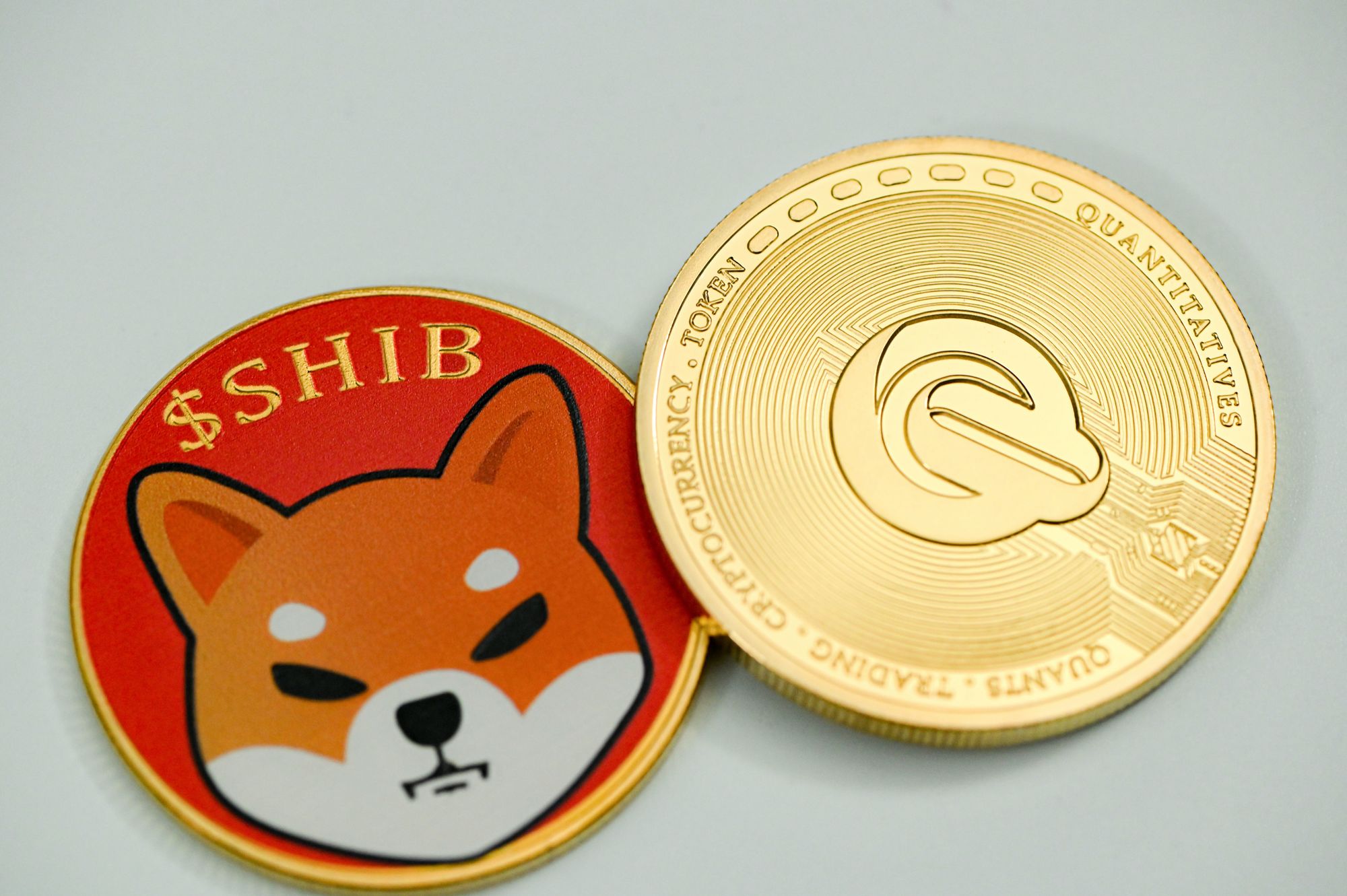According to a recent report by NonFungible, the US-based NFT market has seen tremendous growth over the past year, with sales reaching over $2 billion in 2021. This surge in popularity has sparked interest in a relatively new technology known as Non-Fungible Tokens, or NFTs for short.
But what exactly are NFTs, and why are they creating such a buzz in the art, collectibles, and gaming worlds? This article will explore the basics of NFTs, how they work, and their potential uses and applications.
In simple terms, NFTs are unique digital assets that use blockchain technology to certify ownership and authenticity. This means they cannot be replicated or exchanged for something of equal value.

We will also examine the challenges and controversies surrounding NFTs and what the future may hold for this innovative technology. Whether you are an artist, collector, gamer, or simply curious about NFTs, this article will provide an in-depth look at what they are and why they are becoming so popular.
Here's what we shall cover in this post:
- What Is a Non-fungible Token?
- Key Features of NFT
- How do NFTs Work?
- 8 Benefits of Non-fungible Tokens
- NFTs in Different Sectors
- Why Are NFTs Becoming Popular?
- Potential Drawbacks of NFTs
- Future of NFTs and It's Impact on Society
- FAQs
- Conclusion
- Key Takeaways
What Is a Non-fungible Token?
A Non-Fungible Token (NFT) is a digital asset representing ownership or proof of authenticity of a unique item or piece of content. Unlike traditional cryptocurrencies, such as Bitcoin, NFTs are not interchangeable and have unique attributes that make them distinct from one another.
NFTs are stored on a blockchain, a decentralized ledger that ensures the authenticity and ownership of the token.
History of Non-fungible Tokens
The idea of NFTs can be traced back to the early days of cryptocurrency and blockchain technology. In 2008, the first cryptocurrency, Bitcoin, was created and designed to provide a decentralized and secure way to transfer value.
Over time, the use of cryptocurrencies grew, and the underlying blockchain technology was used to develop other applications, such as smart contracts and NFTs.
In 2013, the concept of smart contracts was introduced, which allowed for the automation of contractual terms and conditions. Smart contracts are self-executing and are stored on the blockchain, providing a secure and transparent record of all transactions.
The use of smart contracts paved the way for the development of NFTs, as they offered a way to represent and transfer ownership of digital assets.
NFTs began to emerge in the early 2010s as artists and creators sought a way to represent their digital creations and verify their ownership. NFTs provided a secure and transparent way to represent digital assets and record their ownership, and they quickly gained popularity in the art world.
In 2014, the first NFT marketplace, CryptoKitties, was created, and it allowed users to buy, sell, and trade digital cats represented by NFTs.
Key Features of NFT
Unique and Irreplaceable: One of the most essential features of NFTs is that they are unique and cannot be replicated or duplicated. Each NFT has its unique identifier, distinguishing it from other NFTs and making it one-of-a-kind.
This characteristic makes NFTs ideal for representing digital assets, such as digital art, music, and other forms of digital content, that are unique and have value.
Ownership and Transferability: Another key feature of NFTs is that they have ownership and transferability, which means that they can be bought, sold, and traded like any other asset. NFTs are stored on a blockchain, which provides a secure and transparent record of all transactions.
This allows the transfer of ownership from one person to another to be recorded securely and transparently.
Stored on the Blockchain: NFTs are stored on a blockchain, which is a decentralized ledger that provides a secure and transparent record of all transactions. The blockchain ensures the authenticity and ownership of the NFT and provides a permanent record of the transfer of ownership from one person to another.
This makes NFTs ideal for representing digital assets, as it allows for a secure and transparent way to prove ownership and authenticity.
Representation of Digital Assets: NFTs primarily represent digital assets, such as digital art, music, and other forms of digital content, that are unique and have value. NFTs provide a secure and transparent way to prove ownership and authenticity of these assets and allow for their transfer from one person to another.
The unique identifier of the NFT ensures that the asset cannot be replicated or duplicated and provides a permanent record of its ownership and transfer history.
How do NFTs Work?
In section, we will explain how NFTs work, including the steps involved in creating, buying, and selling NFTs.
Creating an NFT
Creating an NFT is a simple process that involves a few steps. First, the creator of the NFT must create a digital representation of their asset, such as a piece of art, a song, or a collectible. The digital asset must then be uploaded to a blockchain, where it is verified and stored.
This is typically done using a smart contract, a self-executing contract stored on the blockchain. The smart contract contains the rules for the transfer of ownership of the NFT and ensures that the asset can only be transferred according to these rules.
Issuing the NFT
Once the NFT has been uploaded to the blockchain, it is issued to the creator of the asset. This means that the creator of the NFT becomes the asset owner and has the right to sell or transfer the NFT to another person.
The NFT is stored on the blockchain, and its ownership is recorded in a public ledger, making it easy to verify and track.
Buying an NFT
To buy an NFT, a buyer must first locate the NFT they want to purchase. This can be done using an NFT marketplace, such as OpenSea or Rarible, which are platforms that allow people to buy and sell NFTs.
Once the buyer has found the NFT they want, they can make an offer to buy it. If the offer is accepted, the buyer must transfer the agreed-upon amount of cryptocurrency to the seller's wallet.
Transferring Ownership of an NFT
Once the buyer has transferred the cryptocurrency, the ownership of the NFT is transferred from the seller to the buyer. This is done using a smart contract, which automatically updates the public ledger to reflect the change in ownership.
The NFT is now stored in the buyer's wallet and can be traded, sold, or held as a collectible.
Storing and Managing NFTs
NFTs are stored on the blockchain, making them easy to access and manage. They can be stored in a digital wallet, such as MetaMask or MyEtherWallet, secure and encrypted platforms allowing users to manage their cryptocurrency and NFTs.
These wallets give users access to their NFTs and allow them to view, trade, and manage their assets.
8 Benefits of Non-fungible Tokens
Non-Fungible Tokens (NFTs) are digital assets verified and recorded on a blockchain, providing a new way to represent and trade unique digital assets. In this section, we will discuss the key benefits of NFTs.
- Increased Liquidity: NFTs can increase the liquidity of digital assets by making it easier to trade and sell them. This is because NFTs are recorded on the blockchain, making tracking and verifying ownership and transfers easier. This, in turn, can increase the value of NFTs and make it easier for buyers and sellers to find each other.
- Decentralization: NFTs are based on blockchain technology, which is decentralized and operates on a peer-to-peer network. This means no central authority controlling the network and no transaction intermediaries. This provides a level of security and trust that is impossible with centralized systems.
- Immutable Record: The use of blockchain technology also provides an immutable record of NFT transactions and ownership. This means that once a transaction is recorded on the blockchain, it cannot be altered or deleted.
- Protection of Intellectual Property Rights: NFTs provides a way for individuals and businesses to protect their intellectual property rights and secure their digital assets. This is because NFTs are verified and recorded on the blockchain, providing a secure and transparent ownership and transfer history ledger. This helps prevent unauthorized use and ensures that the owner's rights are protected.
- Lower Costs: Using NFTs can help lower costs associated with transferring and managing digital assets. This is because NFTs eliminate the need for intermediaries and centralized systems, which can be expensive and time-consuming. The decentralized nature of NFTs also reduces the risk of fraud and counterfeiting, which can be costly to detect and remediate.
- Accessibility: NFTs provide a new level of accessibility for digital assets, as they can be bought, sold, and traded globally. This makes it easier for buyers and sellers to find each other, regardless of location and provides a new way for individuals and businesses to participate in the digital economy.
- Interoperability: NFTs can also be used across multiple platforms, as they are based on blockchain technology. This means that NFTs can be traded and used in different applications and systems, making them more versatile and valuable.
- Potential for Innovation: Finally, NFTs have the potential to drive innovation in a variety of industries, as they provide a new way to represent and trade digital assets. This can lead to the creation of new business models and opportunities and the development of new products and services.
NFTs in Different Sectors
Non-Fungible Tokens (NFTs) are a new way of representing ownership and value for digital assets. With the rise of blockchain technology, NFTs have become an exciting new avenue for businesses and individuals in various sectors.
NFTs and Blockchain Technology
Non-Fungible Tokens (NFTs) are a new application of blockchain technology that allows for the creation, ownership, and trade of unique digital assets. This innovative use of blockchain technology is revolutionizing the way we think about ownership and value for digital content.
- One of the key features of NFTs is that they are built on a decentralized network, meaning that ownership is recorded on the blockchain and is not controlled by a central authority.
- Because NFT ownership is recorded on the blockchain, verifying who owns an NFT at any given time is easy. This makes it possible to track the ownership history of an NFT, which is an essential factor in the art world and other sectors that value authenticity and provenance.
- The blockchain is an immutable ledger, meaning that once a transaction is recorded, it cannot be altered or deleted. This makes NFTs a secure way to store and trade digital assets, as ownership records cannot be changed or manipulated.
NFTs in the Art World
Non-Fungible Tokens (NFTs) significantly impact the art world, providing a new and innovative way for artists to sell and distribute their work. The unique features of NFTs, such as verifiable ownership and the ability to create unique digital assets, have opened up new opportunities for artists to reach new audiences and generate new revenue streams.
- Authenticity and Provenance: NFTs provide a secure and transparent way to verify digital artworks' ownership and authenticity. This is especially important in the art world, where authenticity and provenance are critical factors in determining the value of a work. Using NFTs, artists can ensure that their work is authentic and that the ownership history is easily verifiable.
- Direct Sales to Collectors: NFTs provide a direct link between artists and collectors, allowing artists to sell their work directly to collectors without intermediaries. This can increase artists' revenue and provide a more streamlined and cost-effective way for collectors to purchase digital artworks.
- New Revenue Streams: NFTs allow artists to sell their work as unique digital assets, providing new revenue streams beyond the traditional art market. For example, an artist could sell a limited edition of their work as an NFT, providing a new way for collectors to purchase their work and for artists to generate additional revenue.
- Increased Exposure: NFTs allow artists to reach new audiences and increase exposure for their work. By selling their work as NFTs, artists can reach new audiences who may have yet to be able to purchase their work through traditional channels.
- Protection of Intellectual Property: NFTs provide a secure and transparent way for artists to protect their intellectual property. The blockchain provides a permanent record of ownership and transfers, making it easier for artists to prove their ownership of work in case of disputes or infringement.
NFTs in Gaming and Virtual Reality
Non-Fungible Tokens (NFTs) are changing the way we experience gaming and virtual reality. NFTs provide a new way for gamers and virtual reality users to own unique digital assets and interact with the virtual world in new and innovative ways.
- New Forms of Play: NFTs provide a new way for users to play and interact with the virtual world. For example, users can own unique digital items that can be used to advance in a game or interact with the virtual world in new ways. This creates a new level of engagement and interaction with the virtual world.
- Greater Immersion: NFTs provide a new way for users to experience virtual reality and gaming. By owning unique digital assets, users can have a greater sense of ownership and connection to the virtual world, increasing immersion and creating a new level of engagement.
NFTs in Music and Entertainment
Non-Fungible Tokens (NFTs) are revolutionizing the music and entertainment industry by providing a new way for artists, musicians, and entertainers to monetize their work and connect with fans.
- Monetizing Creative Work: NFTs provide a new way for artists, musicians, and entertainers to monetize their creative work. This includes selling unique digital assets such as original music, videos, and other forms of creative content. NFTs, ensure that the ownership of these assets is easily verifiable, creating a new revenue stream for creative professionals.
- Fan Engagement: NFTs provide a new way for artists, musicians, and entertainers to engage with fans. This can include offering exclusive experiences or limited-edition merchandise through NFTs, providing fans with a new way to connect with their favorite artists and entertainers.
- Direct Distribution: NFTs provide a direct distribution channel for artists, musicians, and entertainers to reach their fans. This eliminates the need for intermediaries such as record labels or music streaming platforms, allowing artists to have greater control over their work and reach fans directly.
Why Are NFTs Becoming Popular?
Increasing Demand
Another reason for the popularity of NFTs is that the demand for digital collectibles has been growing rapidly in recent years. With the rise of e-commerce and online marketplaces, there has been an increasing interest in owning and trading digital assets.
Investment Potential
NFTs are also becoming popular because they offer investment potential. Since NFTs are unique, they can often increase in value over time. This makes them an attractive option for investors looking for alternative investment opportunities.
Easy Access
NFTs are becoming popular because they are accessible to everyone. All that is required to purchase an NFT is an internet connection and a digital wallet. This makes NFTs accessible to people from all over the world, regardless of their financial status or location.
No Intermediary
NFTs are becoming popular because they eliminate the need for intermediaries. With NFTs, individuals can buy and sell digital assets directly without the need for a third party. This means that transactions are faster, cheaper, and more secure.
Creative Freedom
NFTs are also becoming popular because they offer artists and creatives greater freedom. With NFTs, artists, and creatives can sell their work directly to buyers without needing an intermediary. This gives them more control over their work and the ability to set their prices.
The popularity of Blockchain Technology
Finally, the popularity of NFTs is also due to the increasing popularity of blockchain technology. As blockchain becomes more widely adopted, the use of NFTs is likely to grow as well. This is because NFTs are a natural application of blockchain technology and offer many benefits over traditional forms of digital ownership.
Potential Drawbacks of NFTs
Non-fungible tokens (NFTs) have seen a surge in popularity in recent years, but as with any new technology, there are potential drawbacks to consider. Here are six potential disadvantages of NFTs:
- Environmental Concerns: NFTs run on blockchain technology, which requires significant energy to run and maintain. This energy consumption has raised concerns about the carbon footprint of NFTs and the impact they could have on the environment.
- Limited Adoption: While NFTs are becoming more popular, they still need to be widely adopted, and the technology is still in its early stages. This means that there may be limited use cases for NFTs and limited demand for them, which could limit their overall growth and success.
- High Cost of Entry: To participate in the NFT market, individuals and organizations need access to expensive technology, such as high-end graphics cards and specialized software. This high cost of entry could limit the number of people and organizations who are able to participate in the NFT market.
- Lack of Regulation: Currently, there is limited regulation of NFTs, which could lead to potential abuses and scams. This lack of regulation also means that there is a risk of financial losses for those who invest in NFTs without fully understanding the technology or the market.
- Technical Complexity: NFTs run on blockchain technology, which can be difficult to understand and navigate for many people. This technical complexity could limit the potential for wider adoption of NFTs and make them difficult for people to use and understand.
- Limited Liquidity: NFTs are unique, one-of-a-kind assets, and as such, they may have limited liquidity. This means that it may be difficult to sell or trade NFTs, especially if there is limited demand for a particular NFT. This lack of liquidity could make it difficult for people to invest in NFTs and profit from them.
Future of NFTs and It's Impact on Society
The future of NFTs and their impact on society is a topic that is attracting a lot of attention in the world of technology and art. They have gained popularity in recent years due to their ability to represent ownership and authenticity of digital assets, such as art and collectibles.
Here are some points discussing the future of NFTs and their impact on society.
Increased Adoption and Popularity
NFTs are becoming more popular as more people become aware of their benefits. As a result, we expect to see a rise in their adoption in various industries, such as art, gaming, and entertainment.
This growth in popularity is likely to drive the development of new NFT platforms and marketplaces.
Greater Acceptance in the Art World
NFTs are becoming increasingly accepted in the art world, and their use will continue to grow in this industry. This is because NFTs provide a new way for artists to sell and authenticate their works and for buyers to prove their ownership. This is likely to drive up the value of NFTs and the art market.
Expansion of NFTs into New Industries
NFTs have already shown potential in various industries, such as gaming and entertainment. As technology continues to advance, NFTs will likely find new uses in other industries, such as real estate, finance, and more.
This expansion will result in new opportunities for businesses and individuals to use NFTs to create and trade digital assets.
The Future of Collecting
NFTs have the potential to revolutionize the way we collect and trade physical and digital assets. They provide a secure and transparent way to transfer ownership, and their unique nature ensures that each NFT is one of a kind. This is likely to drive up the value of NFTs and make them a sought-after commodity in the future.
Impact on Traditional Methods of Ownership
NFTs have the potential to disrupt traditional methods of ownership and transfer of value. For example, NFTs can be used to represent ownership of digital assets, such as music and videos, and to transfer ownership without intermediaries, such as banks or lawyers.
This could lead to a reduction in costs and an increase in efficiency.
FAQs
Here are some frequently asked questions (FAQs) about buying NFTs and the process involved.
What Is the Process of Buying NFTs?
Ans. Buying NFTs is relatively simple and can be done through a few steps. First, you will need to create an account on a marketplace that sells NFTs, such as OpenSea, Rarible, or SuperRare.
After you've created your account, you can browse the available NFTs and select the one you want to purchase. The next step is to make a payment using a supported cryptocurrency like Ethereum. Once your payment is confirmed, the NFT will be transferred to your account, and you will become the proud owner of a unique digital asset.
Do I Need a Cryptocurrency Wallet to Buy NFTs?
Ans. Yes, to buy NFTs, you will need a cryptocurrency wallet. This wallet is where you will store the NFTs you purchase, and it is also where you will make your payment. Many different cryptocurrency wallets are available, including MetaMask, Trust Wallet, and MyEtherWallet, each with its features and benefits.
What Type of Cryptocurrency Do I Need to Buy NFTs?
Ans. The most commonly used cryptocurrency for buying NFTs is Ethereum (ETH), as most NFT marketplaces operate on the Ethereum blockchain. If you are interested in buying NFTs, you must purchase Ethereum and store it in your cryptocurrency wallet before making a purchase.
How Much Does It Cost to Buy NFTs?
Ans. The cost of NFTs varies greatly, ranging from a few dollars to hundreds of thousands of dollars. The price of NFTs is determined by supply and demand, as well as the perceived value of the unique digital asset. Some NFTs are highly sought after, and as a result, their prices can be quite high.
Are NFTs a Good Investment?
Ans. Whether NFTs are a good investment or not is a matter of personal opinion. NFTs can be a high-risk investment, as the value of NFTs can fluctuate rapidly, and the market is still relatively new and volatile. If you are interested in investing in NFTs, it is essential to research, understand the market, and make informed decisions.
How can Deskera Help You?
Deskera's unified financial planning tools help investors plan and track their investments more effectively. It can help investors make more accurate and timely decisions.
Deskera Books can assist you in automating your accounting and lowering business risks. Deskera simplifies invoice creation by automating many other procedures, reducing your team's administrative workload.
Deskera also offers a suite of integrated applications to help businesses manage their finances, inventory, and operations. Deskera also provides other business services and software such as human resources management (Deskera People), CRM (Deskera CRM), and enterprise resource planning (Deskera ERP). These could be crucial in assisting short sellers in staying on top of their businesses and making better decisions.
Conclusion
NFTs have become a major trend in the world of digital assets and have the potential to change the way we think about ownership and value. NFTs allow for the creation of unique, one-of-a-kind digital assets that can be bought, sold, and traded in the same way as traditional physical assets.
They have the potential to revolutionize the world of art, music, and other creative industries, giving artists and creators a new way to monetize their work and build their brands.
However, despite the growing popularity of NFTs, there are still many challenges and uncertainties surrounding the technology and its future.
The lack of regulation and standardization, as well as concerns over the environmental impact of the NFT market, are just some of the challenges that need to be addressed in order for NFTs to reach their full potential.
Despite these challenges, the future of NFTs looks bright, and it is likely that they will continue to grow in popularity and usage in the coming years. As more and more people become familiar with NFTs and the benefits they offer, we expect to see an increasing number of innovative and creative applications of the technology.
Whether NFTs will become the next big thing in the world of digital assets or not remains to be seen, but one thing is clear: they have already disrupted the status quo and are set to have a major impact on the way we think about and value digital assets in the future.
Key Takeaways
- NFTs are unique, one-of-a-kind digital assets that use blockchain technology to certify ownership and authenticity.
- NFTs are changing the way we think about ownership and value in the digital world, allowing for the creation of rare and collectible digital assets.
- The NFT market has seen tremendous growth in recent years, particularly in the areas of art, music, and sports collectibles, among others.
- NFTs have the potential to revolutionize the way artists and creators monetize their work, allowing them to sell their creations directly to fans and collectors.
- The use of NFTs has opened up new opportunities for creators to build their personal brands and establish their work as valuable and collectible.
- The NFT market is still in its early stages and lacks regulation and standardization, which could pose a challenge to its future growth.
- There are also concerns over the environmental impact of the NFT market, as the production of NFTs requires a significant amount of energy.
Related Articles












